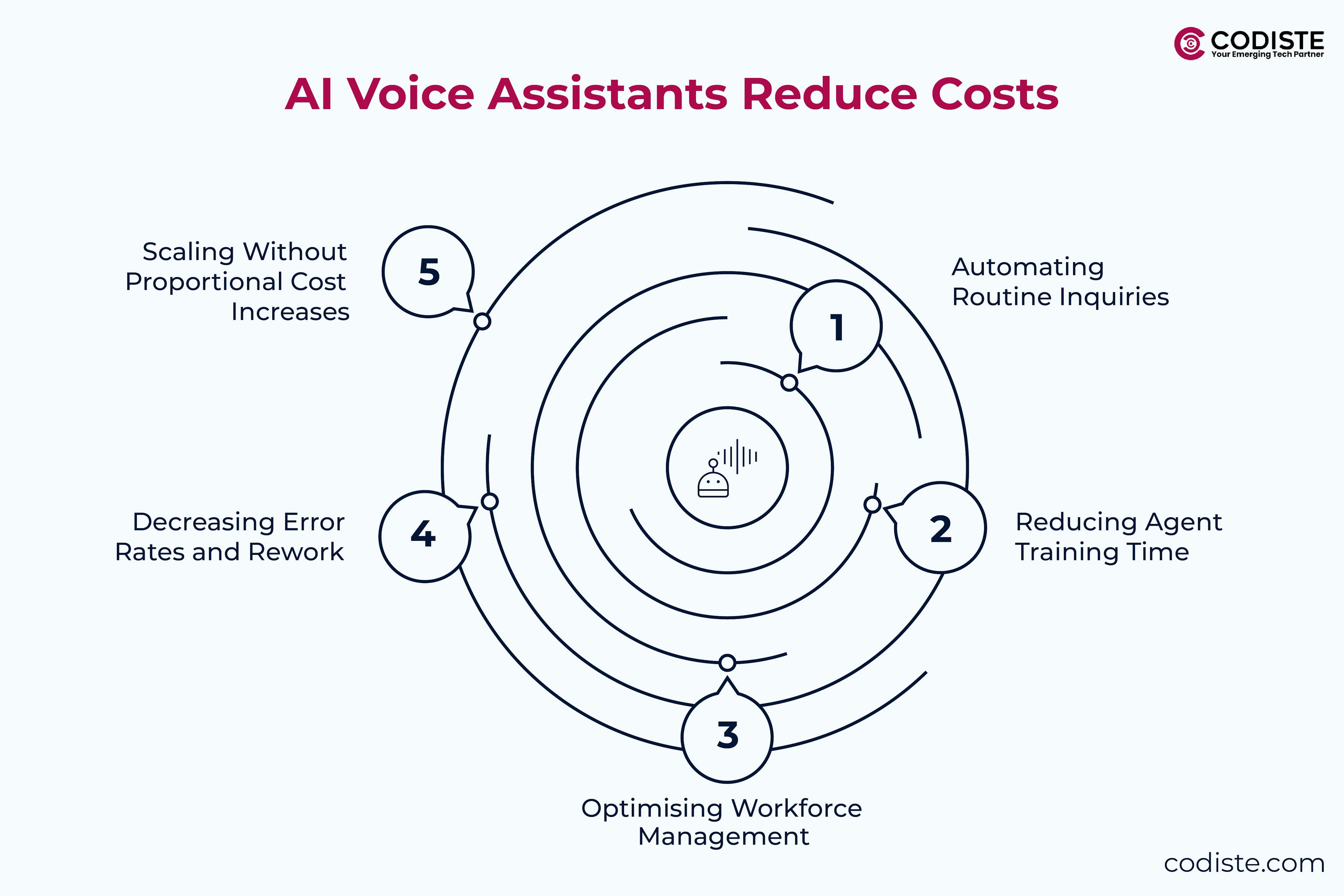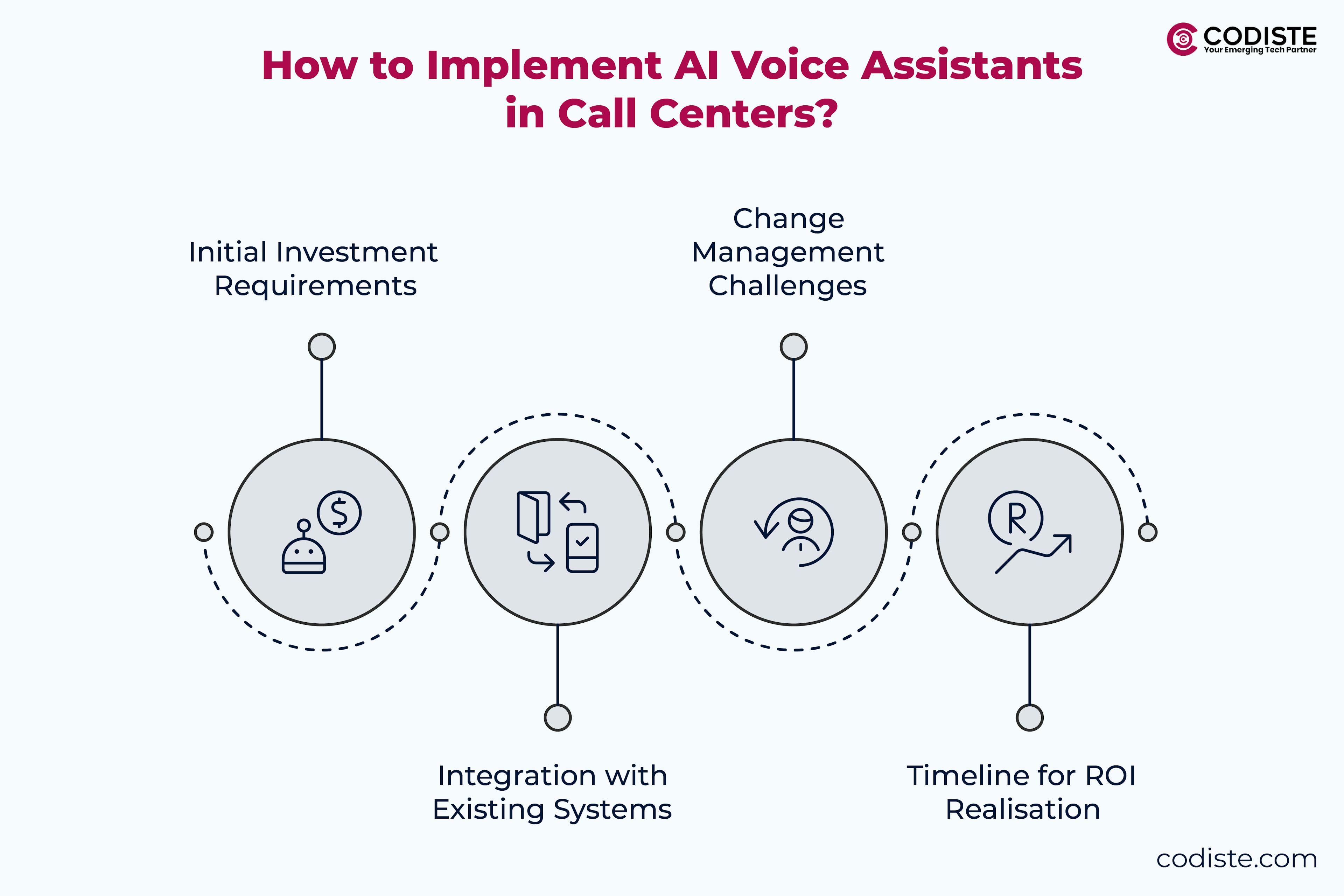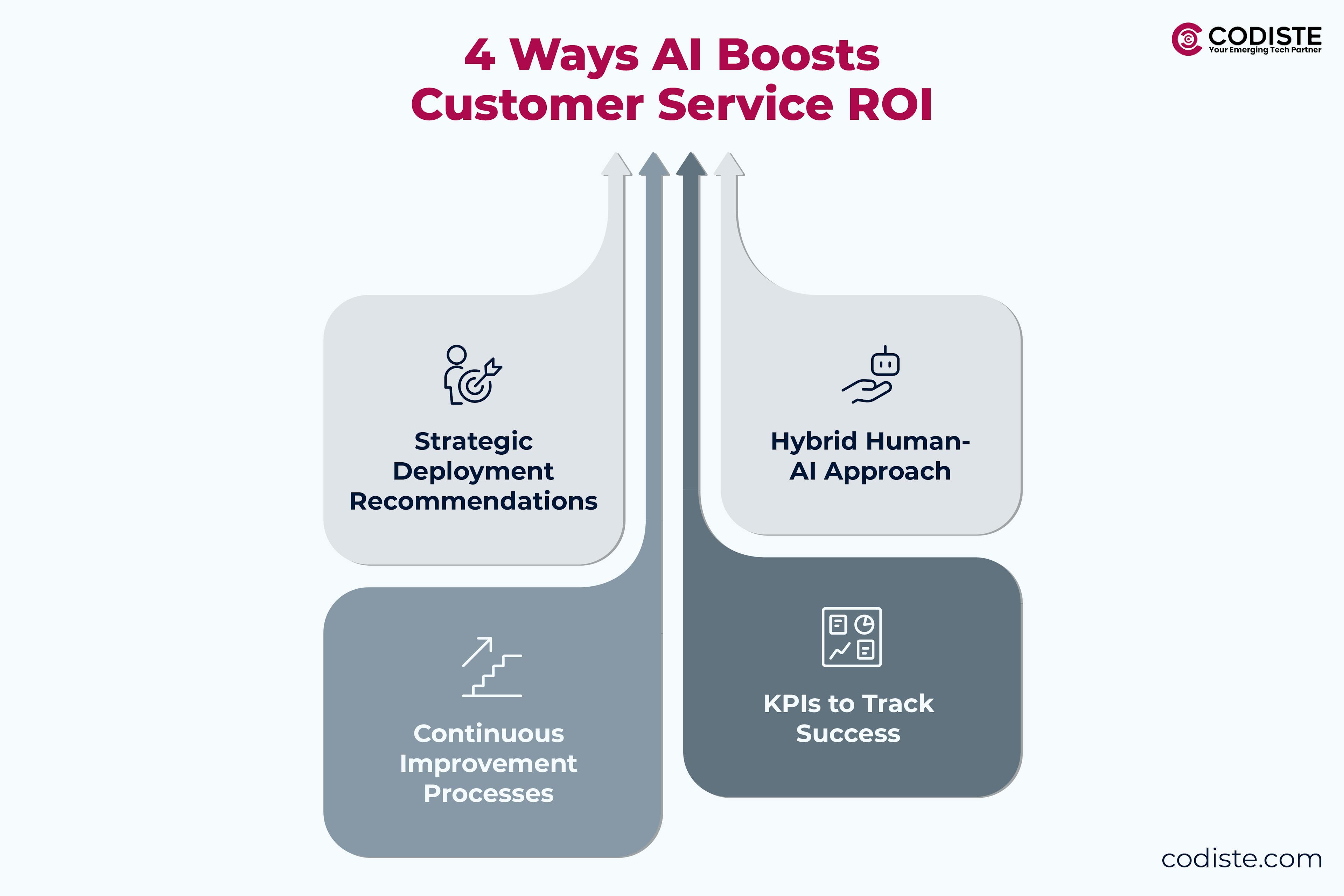
,
Increased labor costs, the requirement for comprehensive training programs, and the desire for better customer service have all contributed to the recent steady increase in call center operating costs. Finding efficient ways to reduce these expenses has become crucial as businesses work to preserve profitability while providing outstanding customer service.
The rise of AI voice assistants, which are revolutionizing the call center industry, is one of the most important advancements in this field. These emerging technologies are greatly improving consumer encounters and simplifying operations. AI voice assistants in customer service are revolutionizing the way businesses operate by automating repetitive tasks and offering round the clock assistance.
This article discusses how AI voice assistants save money by automating repetitive jobs, improving productivity and 24/7 availability, and reducing training costs. We will also explore industry trends and success stories from companies that have integrated AI technologies. Discover how AI voice assistants affect call center operations.
The Cost Challenge Current Call Centers Face
Rising staffing, training, and infrastructure costs are causing call center operational issues. Salaries, perks, and hiring and training new agents are the biggest costs. Agents need regular training on products and customer service, which can be costly. Infrastructure costs, including technology and real estate, increase the financial strain.
Service complexity and operational efficiency affect the average cost-per-call, which is $2.70 to $5.60. High expenses can limit budgets for technological updates and customer service improvements.
Long wait times, high agent turnover, and inefficient operations plague traditional call centers. Long call handling times raise labor costs and customer dissatisfaction, which increases operational costs.
Cost reduction is key to staying competitive. Lower operational costs and improved service help companies attract and retain clients. Low call costs allow enterprises to offer competitive pricing, invest in sophisticated technologies, and improve customer experiences. Long-term profitability depends on cost efficiency in an industry where client tastes change quickly.
How Do AI Voice Assistants Reduce Call Center Costs
AI voice assistants are improving call center efficiency and customer service. NLP, machine learning, and speech recognition drive the transition. These technologies allow voice assistants to hear and respond to human speech quite accurately, making interactions more natural.
Conversational AI tools have advanced greatly from basic Interactive Voice Response (IVR) systems. Due to their complicated menus, traditional IVR systems were inefficient and frustrating. However, these conversational AI tools let clients have natural conversations, increasing the user experience.
Artificial intelligence voice assistants use natural language processing and machine learning to learn from interactions and improve. The assistant learns context, intent, and emotional cues through this continual learning process, resulting in more tailored and effective responses.
Call centers may track performance and client interactions using real-time statistics from AI voice assistants. Organizations can improve operations and service quality using actionable insights from this data-driven strategy.
Overall, AI voice assistants are improving customer interactions, streamlining operations, and providing important analytics to call centers, improving efficiency and satisfaction.
5 Ways AI Voice Assistants Reduce Costs
- Automating Routine Inquiries
Normal questions are tedious for human agents, but AI voice assistants thrive on them. Account balance inquiries, commonly asked questions, and appointment scheduling can be automated. Studies estimate that 70% of inquiries can be automated, decreasing the requirement for live personnel. The cost comparison shows that automated interactions can cost 10-15% of the normal $2.50 to $5.60 for each call, saving significant money.
- Reducing Agent Training Time
AI voice assistants also dramatically reduce agent training. AI can help human agents resolve issues faster by providing real-time information and ideas during calls. Using a knowledge base gives AI access to current information, giving agents the resources they need. This support can speed up onboarding and cut training expenditures for new hires.

- Optimising Workforce Management
Intelligent call routing and prioritizing by AI voice assistants improve workforce management. AI may match calls to agents, minimizing idle time and optimizing resource use. AI can also predict call volume patterns to help companies avoid overstaffing and understaffing.
- Decreasing Error Rates and Rework
AI voice assistant’s consistency is a major benefit. Human-agent errors are reduced, reducing rework and customer discontent. By delivering precise and standardized information, AI systems can help guarantee industry laws are followed, reducing error-related expenses.
- Scaling Without Proportional Cost Increases
Companies may scale without increasing costs using AI voice assistants. Businesses can answer customer inquiries 24/7 without overtime expenditures. AI can handle peak-time volume spikes without adding humans, assuring ongoing customer service. AI integration across channels improves operational efficiency by providing a seamless consumer experience.
In conclusion, AI voice assistants automate routine questions, cut training time, optimize workforce management, reduce error rates, and enable scalable operations, lowering call center costs. These benefits provide significant financial savings and boost client satisfaction.
Businesses thinking about implementing AI voice agents, why stop now? Take action right now.
How to Implement AI Voice Assistants in Call Centers?
When integrating AI voice assistants in customer service, several key implementation considerations must be addressed to ensure a successful transition and maximize the benefits of the technology.
- Initial Investment Requirements
The initial expenditure for AI voice assistants might be large. Companies must budget for technology, software licenses, and hardware updates. System customization and infrastructure integration may cost money, but effective financial planning requires knowing these charges.

- Integration with Existing Systems
Successful implementation requires system integration. AI voice assistants must integrate with call center CRM, database, and other technologies. This integration lets the AI access customer data and respond accurately, improving the customer experience.
- Change Management Challenges
AI voice assistants can be difficult to implement. Concerns about job loss or unfamiliar systems may prevent employees from adopting new technologies. To smooth the shift, workers must be engaged early and trained. Clear explanations of AI's benefits and how it will complement human responsibilities can reduce resistance.
- Timeline for ROI Realisation
Organizations should set a reasonable ROI timing. Although AI voice assistants can save money, their ROI may be slow. Timing can be affected by training, system integration, and technology acceptance. Milestones and performance metrics can assist in managing progress and ensure promised benefits are reached on time.
For call centers to successfully implement AI voice assistants, initial investment requirements, integration with existing systems, change management challenges, and the ROI timeline must be addressed. Businesses may maximize the promise of this disruptive technology by preparing and involving stakeholders.
Best Practices to Maximize ROI in Customer Service with AI Agents
Businesses should follow several best practices that emphasize strategic deployment, ongoing development, and efficient performance monitoring to guarantee that the use of AI voice assistants provides the maximum return on investment (ROI).
- Strategic Deployment Recommendations
Aligning AI voice assistants with organizational goals requires strategic deployment suggestions. To choose the most valuable AI use cases, organizations should assess their needs. AI can do repetitive, time consuming tasks while humans handle more complex issues. Resource allocation and process technology integration are optimized by deployment planning.

- Hybrid Human-AI Approach
A combined human and AI strategy maximizes ROI. It uses AI and human beings to improve customer service through seamless collaboration. AI handles routine questions and supports human agents, who handle more complex consumer interactions. Our alliance improves productivity and maintains the human touch that customers value.
- Continuous Improvement Processes
AI voice assistant performance requires constant improvement. With customer and agent input, organizations should constantly evaluate AI interactions. Iterative modifications and additions allow the AI system to adapt to changing client wants and company goals.
- KPIs to Track Success
Organizations must develop and track KPIs for AI voice assistant performance. These KPIs should aid business goals and reveal operational effectiveness, customer satisfaction, and cost savings. Key performance indicators include response times, mistake rates, client happiness, and AI inquiry success rates. These KPIs let firms evaluate AI's influence on operations and make investment decisions.
In conclusion, strategic deployment recommendations, a hybrid human-AI approach, continuous improvement processes, and effective KPI tracking can maximize the ROI of AI voice assistant implementations, improving the efficiency and customer satisfaction of organizations.
Conclusion
In conclusion, businesses have a strong chance to save operating costs by implementing AI voice assistants in customer service. By automating repetitive tasks, optimising workforce management, and improving general efficiency, companies can drastically reduce expenses while simultaneously increasing customer satisfaction.
When it comes to call centers, the future appears bright. As technology develops further, we may anticipate even more advanced AI capabilities that will improve consumer satisfaction and significantly streamline processes. AI-driven solutions are becoming more than simply a fad; they are becoming an essential component of contemporary customer service tactics.
Significant cost reductions and operational enhancements can result from implementing AI voice assistants. It's high time to start the process of modifying your customer service centers by looking into AI options that fit your company's objectives. With Codiste at your disposal, you might have some good AI voice agents who are truly capable of taking the journey toward increased efficiency and customer happiness. The potential advantages are enormous. Try AI voice agents today.





